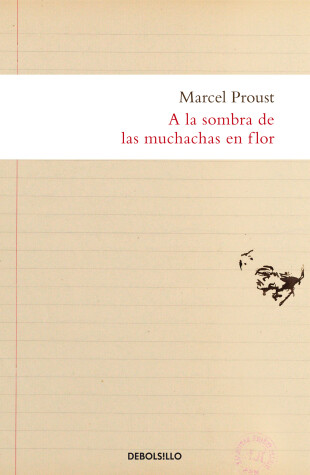Busca del Tiempo Perdido
2 primary works
Book 1
En 1913 vio la luz esta primera entrega de uno de los ciclos novelísticos más admirables de la historia de la literatura: En busca del tiempo perdido, un camino iniciático y un análisis, de hondo calado filosófico, de la compleja relación del tiempo con la memoria, ese instrumento —formado por recuerdos, ensaciones, incluso sabores—para reapropiarse del pasado y de ese modo devolver su integridad al presente.
El libro se divide en tres partes, todas ellas variaciones sobre el tema del tiempo que inexorablemente queda atrás: «Combray», el pueblo de la infancia del protagonista, que lo rememora antes de dormir; «Un amor de Swann», o el despilfarro del tiempo en un amor, el de Odette y Swann, agostado por los celos; «Nombres de país: el Nombre», que gira en torno a los recuerdos de la adolescencia.
ENGLISH DESCRIPTION
The first volume of Proust’s seven-part novel “In Search of Lost Time,” also known as “A Remembrance of Things Past,” “Swann’s Way” is the auspicious beginning of Proust’s most prominent work. A mature, unnamed man recalls the details of his commonplace, idyllic existence as a sensitive and intuitive boy in Combray. For a time, the story is narrated through his younger mind in beautiful, almost dream-like prose. In a subsequent section of the volume, the narrator tells of the excruciating romance of his country neighbor, Monsieur Swann. The narrator reverts to his childhood, where he begins a similarly hopeless infatuation with Swann’s little daughter, Gilberte. Through a fragmented narrative, Proust examines the thematic importance of memory, time, and art that connect and interweave the protagonist’s memories. Considered to be one of the twentieth century’s most significant novels, Proust ultimately portrays the volatility of human life in this sweeping contemplation of reality and time.
Book 2
A la sombra de las muchachas en flor / In The Shadow Of Young Girls In Flower
by Marcel Proust
Segundo volumen de En busca del tiempo perdido, obra cumbre de la literatura del siglo XX, A la sombra de las muchachas en flor describe el itinerario de un doble aprendizaje: erótico y artístico. El papel de iniciadora corresponde a Gilberte y la historia de la pasión que ella inspira al narrador constituye la parte central del libro. En este episodio, aparentemente inocente, de un cortejo adolescente, todo tiene un valor ejemplar: el contraste entre la espera febril de la persona amada y la desilusión que su presencia provoca, con el consiguiente aplazamiento continuo de las esperanzas y la imposibilidad de vivir la felicidad como momento actual; los golpes de efecto que revelan posibilidades ni siquiera soñadas cuando todo parecía perdido; la “gimnasia de la indiferencia”, perseguida con sorprendente lucidez por el joven narrador; la ruptura, por último, de ese círculo vicioso por obra del tiempo, que caprichosamente y mediante diversas intermitencias conduce al olvido. Pero amor y arte, lejos de excluirse, se ayudan mutuamente, pues Gilberte es quien hace de intermediaria entre el narrador y Bergotte y es en el taller de Elstir donde conoce inesperadamente a Albertine. Pero esa afortunada connivencia resultará ser una de las numerosas ilusiones y falsas pistas diseminadas en el camino seguido por el narrador de En busca del tiempo perdido y que ni siquiera pueden considerarse necesarias para preparar el descubrimiento final de la verdad, ya que en el pesimista universo proustiano, ésta resulta ser una concesión caprichosa e imprevisible, como un don gratuito, ante el cual la única actitud válida es la disponibilidad.
ENGLISH DESCRIPTION
The second volume of In Search of Lost Time, one of the greatest novels of the twentieth century
James Grieve's acclaimed new translation of In the Shadow of Young Girls in Flower will introduce a new century of American readers to the literary riches of Marcel Proust. As the second volume in the superb edition of In Search of Lost Time—the first completely new translation of Proust's novel since the 1920s—it brings us a more comic and lucid prose than English readers have previously been able to enjoy. In the Shadow of Young Girls in Flower is Proust's spectacular dissection of male and female adolescence, charged with the narrator's memories of Paris and the Normandy seaside. At the heart of the story lie his relationships with his grandmother and with the Swann family.
As a meditation on different forms of love, In the Shadow of Young Girls in Flower has no equal. Here, Proust introduces some of his greatest comic inventions, from the magnificently dull Monsieur de Norpois to the enchanting Robert de Saint-Loup. It is memorable as well for the first appearance of the two figures who for better or worse are to dominate the narrator's life—the Baron de Charlus and the mysterious Albertine.

